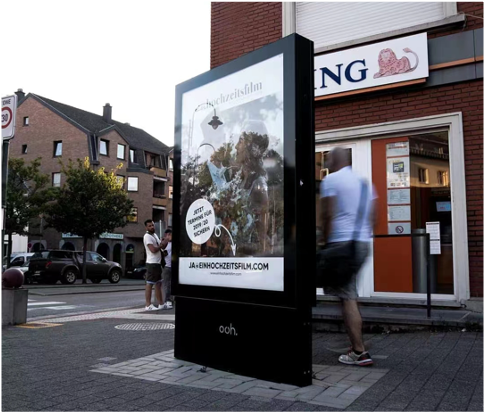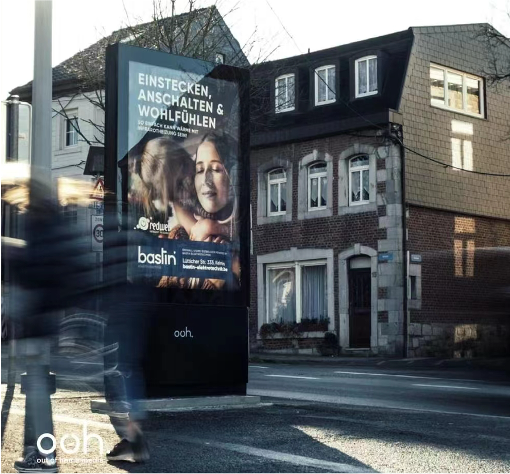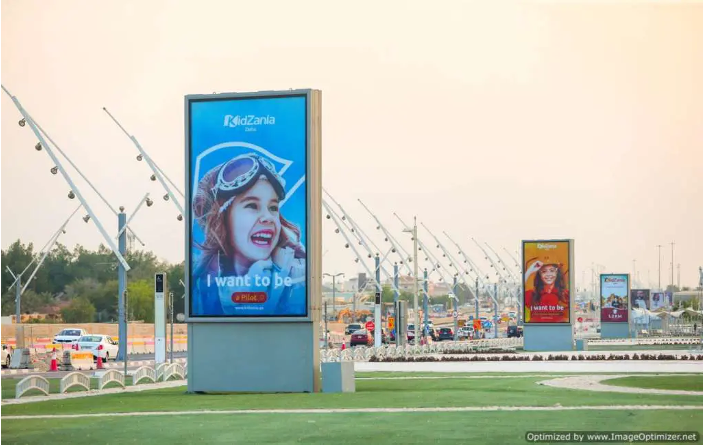The Significance of Freestanding Digital Signage in Outdoor Advertising -cnlcdisplay.com
Freestanding digital signage represents the convergence of technology and communication, offering a unique way to convey information, messages, and promotions.
These digital displays are typically standalone units equipped with high-resolution screens, capable of showcasing a variety of content ranging from videos and images to real-time updates and interactive applications.
As a dynamic form of communication, freestanding digital signage can captivate attention, engage audiences, and drive interaction.

Advantages and Benefits of Freestanding Digital Signage:
- Engagement and Attention: Freestanding digital signage captures attention with vivid visual effects and dynamic content, making it more appealing than traditional static signs. Dynamic graphics and interactive elements encourage engagement, contributing to better information retention.
- Flexibility and Updates: Unlike printed signs, digital displays can be updated in real time. This agility allows businesses to convey time-sensitive information, adapt to changing environments, and rapidly showcase new products or promotions.
- Customization: Freestanding digital signage can be customized for specific audiences, locations, and events. This customization enhances relevance and ensures that the information resonates with the audience.
- Interactivity: Many freestanding digital displays offer touchscreen functionality, enabling users to interact with the content. This engagement promotes a more immersive experience, suitable for wayfinding, information retrieval, and entertainment.
- Cost-Effectiveness: While the initial investment in hardware and software may be higher compared to traditional signs, digital signage saves costs in the long run by eliminating the need for printing and distributing static materials.
- Environmental Impact: Digitization reduces paper waste and promotes sustainability, aligning with the ecological values of many organizations.

Applications of Freestanding Digital Signage:
- Retail: Retailers use freestanding digital signage to showcase products, promotions, and advertisements. Interactive displays allow customers to browse product details, compare options, and even place orders.
- Hospitality: In hotels, resorts, and restaurants, freestanding digital signage guides guests to various amenities, displays event schedules, and provides localized information.
- Healthcare: Digital displays in healthcare facilities assist patients and visitors with wayfinding, queue management, and educational content.
- Corporate Settings: Businesses utilize digital signage in reception areas, lobbies, and meeting rooms to convey corporate information, welcome visitors, and share real-time data.
- Education: Educational institutions use freestanding digital signage for announcements, campus navigation, event promotions, and interactive educational content.
- Entertainment: Entertainment venues like cinemas and theaters employ digital signage to display show schedules, trailers, and create interactive pre-show experiences.

Future Trends and Possibilities of Freestanding Digital Signage:
The future of freestanding digital signage looks promising, with several exciting trends on the horizon:
- Augmented Reality (AR) Integration: AR overlays can enhance user interaction by adding information layers and interactivity to the physical environment.
- Artificial Intelligence (AI) Personalization: AI-driven analytics can customize content based on audience demographics, preferences, and behavior, creating more personalized experiences.
- Integration with Mobile Devices: Seamless integration with smartphones and wearable devices can bridge the gap between the physical and digital worlds, allowing users to interact with displays using their devices.
- Gesture Control: Gesture recognition technology enables users to interact with displays without physical contact, enhancing hygiene and interactivity.

Freestanding digital signage transcends the limitations of traditional static signs, ushering in an era of dynamic communication, engagement, and interaction.
From retail spaces to educational institutions, these digital displays are reshaping the way information is conveyed and received. The benefits of increased engagement, customization, and flexibility make freestanding digital signage an indispensable tool for modern communication.
With ongoing technological advancements, the potential for innovative applications and richer user experiences in this field is limitless.